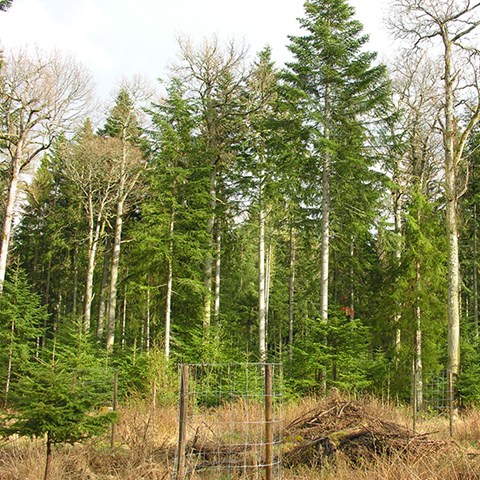How to best establish and manage mixed broadleaved continuous covered forests, and where in the landscape do these methods have the best chance of success? This is what the project will investigate, along with how variables such as timber production, carbon sequestration, biodiversity, and how balancing of interests are affected by clear-cut-free deciduous-dominated forestry.
Climate change and biodiversity loss is making it even more important to design alternative forest management methods that better withstand various stresses, while sustaining important habitats for forest biodiversity and contributing to climate mitigation via wood production. Identifying management alternatives that can simultaneously balance such a diversity of interests may also help reduce societal conflicts involving production forests.
Mixed temperate broadleaf production forest in southern Sweden is one such management alternative that could be used to a greater extent. If a tree species in a mixed forest is vulnerable to a particular climate risk, the other tree species may be more resilient, which creates a more stable forest environment for sustaining various ecosystem services. In addition, continues cover forestry, i.e. forms of management where clear cutting is avoided and where one relies on natural regeneration in mixed stands of different ages, can also be used to reduce some of the climate associated risks we face. Used in combination, mixed temperate uneven-aged broadleaved forests are thereby likely to better withstand the risks posed by pests and a changing climate, while the diversity of forest structures and tree species should also benefit biodiversity.
The three goals of our BROADEN project are to determine: 1) How best to establish and manage mixed uneven-aged broadleaved forests; 2) Where in the landscape cost-effective regeneration and management has the best chance of success; 3) What ability they have to produce wood, store carbon, and provide habitat for biodiversity, and how can synergies between different ecosystem services be optimized. To find cost-effective solutions, we will use experiments, questionnaires, modeling and synthesis work, based on novel regeneration experiments that are linked to a unique series of long-term experiments involving the selective cutting of mixed broadleaf forest.
